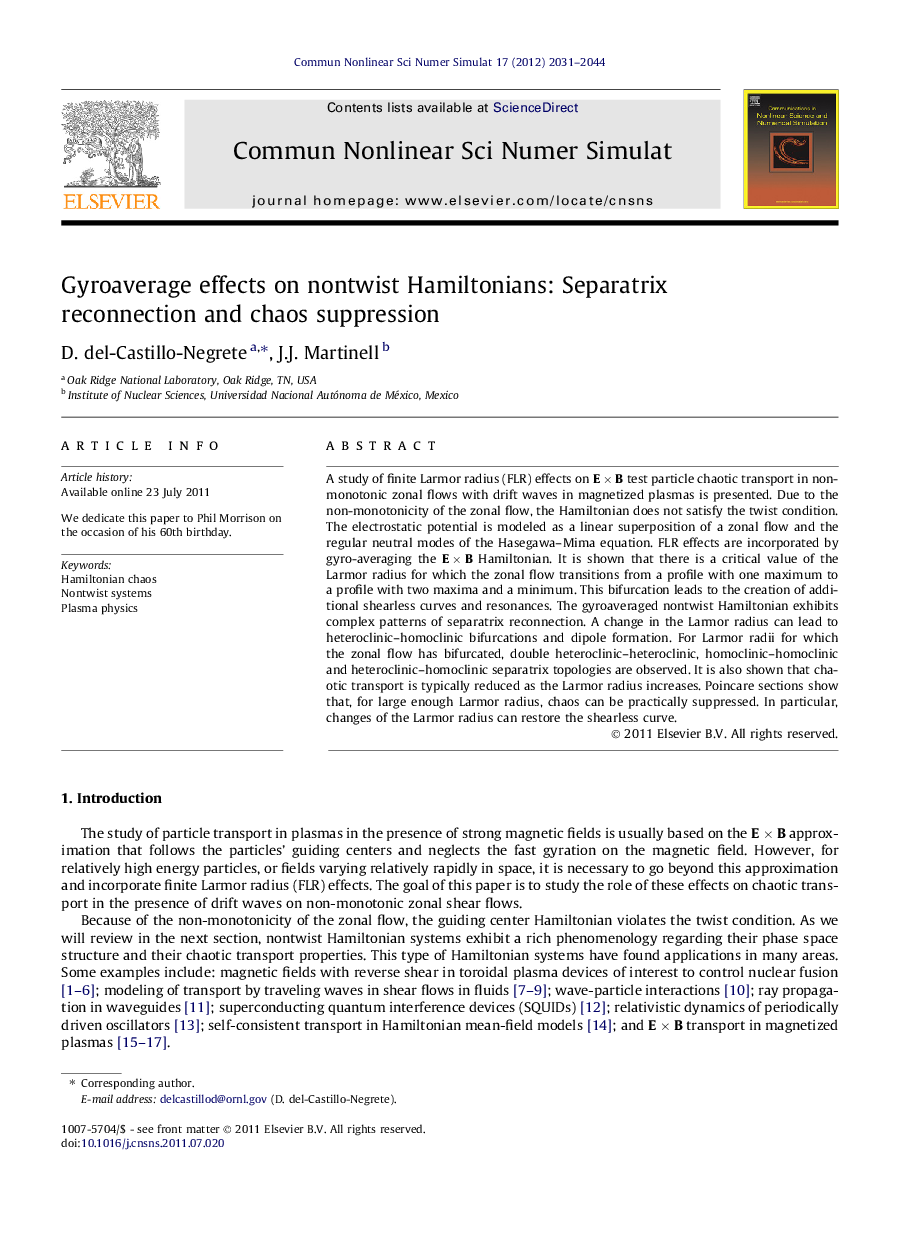| Article ID | Journal | Published Year | Pages | File Type |
|---|---|---|---|---|
| 758440 | Communications in Nonlinear Science and Numerical Simulation | 2012 | 14 Pages |
A study of finite Larmor radius (FLR) effects on E × B test particle chaotic transport in non-monotonic zonal flows with drift waves in magnetized plasmas is presented. Due to the non-monotonicity of the zonal flow, the Hamiltonian does not satisfy the twist condition. The electrostatic potential is modeled as a linear superposition of a zonal flow and the regular neutral modes of the Hasegawa–Mima equation. FLR effects are incorporated by gyro-averaging the E × B Hamiltonian. It is shown that there is a critical value of the Larmor radius for which the zonal flow transitions from a profile with one maximum to a profile with two maxima and a minimum. This bifurcation leads to the creation of additional shearless curves and resonances. The gyroaveraged nontwist Hamiltonian exhibits complex patterns of separatrix reconnection. A change in the Larmor radius can lead to heteroclinic–homoclinic bifurcations and dipole formation. For Larmor radii for which the zonal flow has bifurcated, double heteroclinic–heteroclinic, homoclinic–homoclinic and heteroclinic–homoclinic separatrix topologies are observed. It is also shown that chaotic transport is typically reduced as the Larmor radius increases. Poincare sections show that, for large enough Larmor radius, chaos can be practically suppressed. In particular, changes of the Larmor radius can restore the shearless curve.
► Finite Larmor radius (FLR) effects on chaotic transport in plasmas are studied. ► FLR is incorporated through a gyroaverage of the guiding center orbits. ► The resulting gyroaveraged test particle Hamiltonian violates the twist condition. ► Separatrix reconnection is studied in the nontwist gyroaveraged Hamiltonian. ► Chaotic transport is typically suppressed as the Larmor radius increases.
